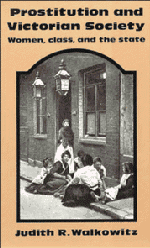Book contents
- Frontmatter
- Contents
- Preface
- Introduction: The Revolt of the Women
- Part I Prostitution, Social Science, and Venereal Disease
- Part II The Contagious Diseases Acts, Regulationists, and Repealers
- 4 The Contagious Diseases Acts and Their Advocates
- 5 The Repeal Campaign
- 6 The Leadership of the Ladies' National Association
- 7 Class and Gender Conflict Within the Repeal Movement
- Part III Two Case Studies: Plymouth and Southampton Under the Contagious Diseases Acts
- Epilog
- Notes
- Selected Bibliography
- Index
5 - The Repeal Campaign
Published online by Cambridge University Press: 01 June 2011
- Frontmatter
- Contents
- Preface
- Introduction: The Revolt of the Women
- Part I Prostitution, Social Science, and Venereal Disease
- Part II The Contagious Diseases Acts, Regulationists, and Repealers
- 4 The Contagious Diseases Acts and Their Advocates
- 5 The Repeal Campaign
- 6 The Leadership of the Ladies' National Association
- 7 Class and Gender Conflict Within the Repeal Movement
- Part III Two Case Studies: Plymouth and Southampton Under the Contagious Diseases Acts
- Epilog
- Notes
- Selected Bibliography
- Index
Summary
In 1869 the men and women who first organized public opposition to the Contagious Diseases Acts were dismissed as a small sectarian group of “eccentric cranks” and religious zealots. For most of the 1870s the repeal movement continued to be regarded as a “forlorn hope” even by its staunchest supporters. By 1880, however, the social and political climate had changed. The image of the repeal movement as a collection of cranks still persisted, especially in certain official circles, but the political power and popular appeal of the repealers could not be ignored. By this time, these “eccentrics” had been able to impose their views on a significant part of the general public and also to dictate Liberal party policy on the subject of regulation. Their political influence could be felt at national and local levels. In 1883, for example, Joseph Rowntree recounted a conversation he had had recently with a political acquaintance in York. The gentleman had asked him, “have you any fads in York?” “I said, ‘Yes, any Liberal candidate must be against the C. D. Acts.’”
How did repealers move from the periphery of social and political power to center stage? They certainly benefited from the reorganization and domination of the Liberal Party by Radicals in the early eighties. But structural change in the Liberal Party apparatus tells only part of the story. The repeal of the acts also reflected a new public consensus on prostitution and the double standard.
- Type
- Chapter
- Information
- Prostitution and Victorian SocietyWomen, Class, and the State, pp. 90 - 112Publisher: Cambridge University PressPrint publication year: 1980

